
Hai Phong
How to travel to Hai Phong for your best experience
Hai Phong Travel Guide – What to do, when to visit, and more…
Haiphong, Vietnam’s third largest city (after Hanoi and Ho Chi Minh) and the second largest economic center in Northern Vietnam, is located on the northern arm of the Red River Delta which is about 100km away from Hanoi. As the important traffic route in the north and the main gateway to Cat Ba Island (as well as HaLong Bay), Hai Phong plays a key role in both the economy and tourism of Vietnam. Also called “The City of the Red Flamboyant”, it’s second only to Hanoi for amazing, crumbling colonial-era architecture with photogenic streets and distinctive cuisine. With the flourishing economy plus beautiful natural landscape, Hai Phong is not only an economic center but also a great tourist attraction. Whether you travel to Hai Phong for a city tour or as a stop on the way to HaLong Bay, don’t miss the opportunity to see what Hai Phong has to offer. Either way, let’s read our complete guide below on how to travel Hai Phong for your best experience.
Frequently asked questions
1. Do Son Beach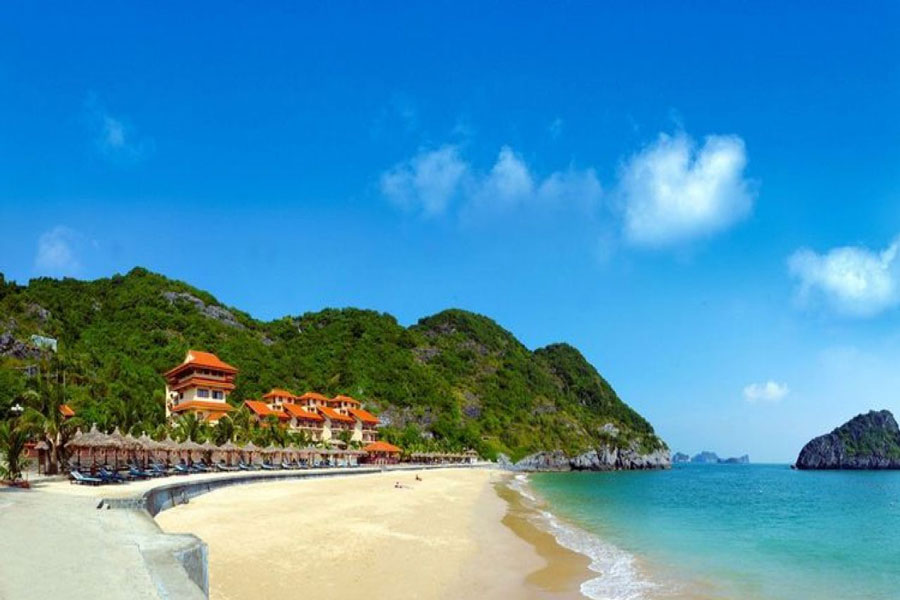
22 km from Hai Phong lie the three beaches of Do Son, that was once a popular resort area for the French, is now popular among the Vietnamese – especially sun seekers traveling from Hanoi. Relaxing on the white sand beaches, visiting the remains of an ancient clay tower and Buddhist temple on Ngoc Son Mountain are on the bucket list of any tourist who visit here for the first time.
And if you arrive about time, you may join the traditional buffalo fighting during the annual Buffalo Festival on August 9th (lunar calendar). The bull fighting festival is the combination between agriculture custom and fishing custom: the bull is the symbol of Vietnamese agriculture and after the festival, the bull will be slaughtered and offered to the god of the sea.
2. Cat Ba Island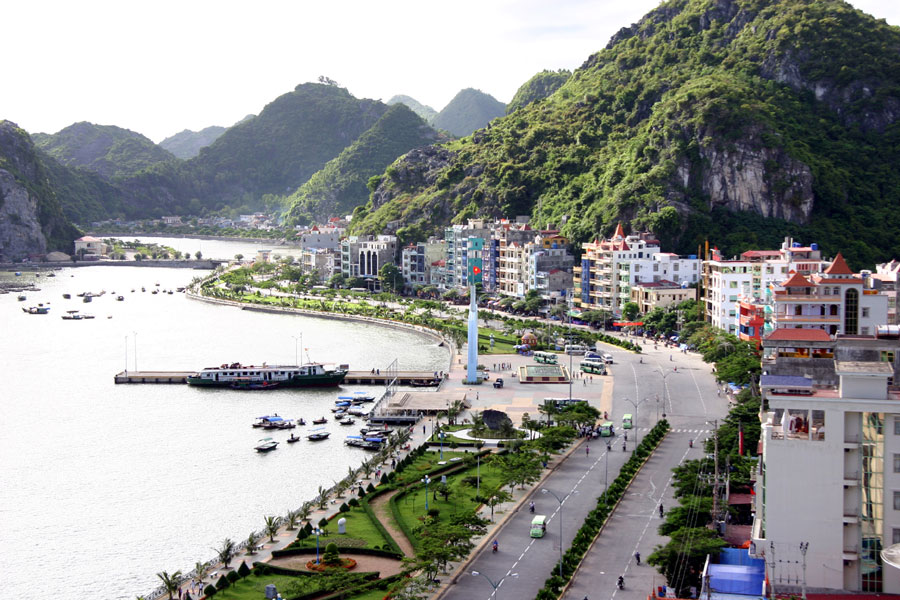
Cat Ba Island, the scenic gem of the Gulf of Tonkin, is the largest island in HaLong Bay, a body of water littered with majestic limestone karsts in a blue-green sea. Cat Ba Island is large enough to support a town, and this town is the most popular overnight stop on HaLong Bay cruises. It is here that you can dive deep below the sea surface and explore the mysterious caves, refresh your eyes with the pure landscape of the Cat Ba National Park and spend a peaceful sunset in the rustic Cat Ba town.
3. Dau Island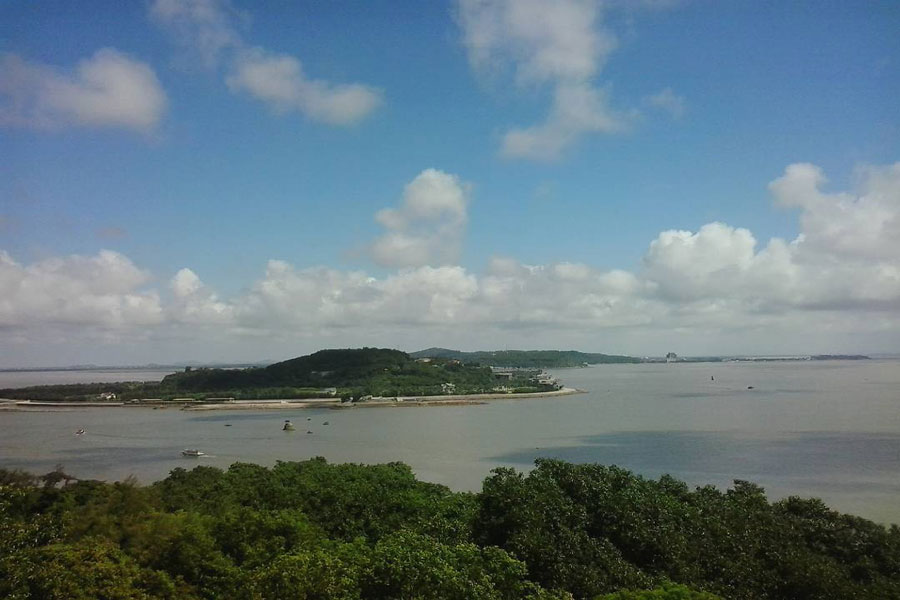
Dau Island belongs to Do Son Beach, Hai Phong. Most parts of the island still remain the primary state. On the island, there is a temple of Nam Hai Dai Vuong, a lighthouse and some other monuments. The beacon in Hon Dau is very famous, which is like the ‘eye’ of Hai Phong, built-in 1892 with French architecture. Standing at the lighthouse, visitors have the opportunity to admire the whole island and the vast oceans. Additionally, after visiting the temple, lighthouse or wandering in the vast primeval forest, visitors can have a cruise on the golden sand beach, have fun with the cool harmonic wave. The endless sea, as well as spectacular wild mountain scenes, will sweep away all your sorrow and tiredness, giving you peace in the soul.
4. Elephant Mountain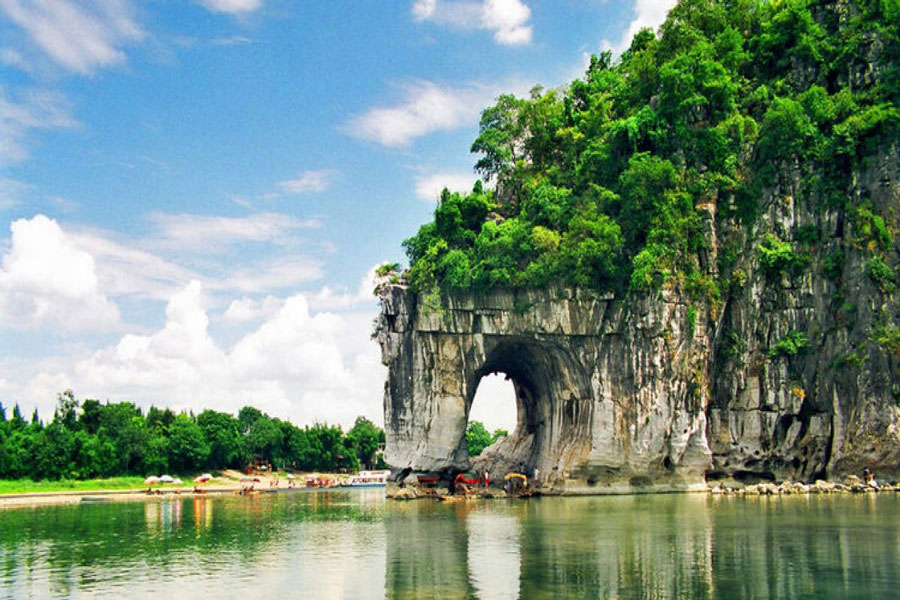
Elephant Mountain is about 20 km from the center of Hai Phong city to the southwest. It is the highest mountain in the north of Kien An, lying on the bank of the Lach Tray River. Elephant Mount has many beautiful caves: Ca Voi Cave, Chieng Cave, Ca Gia Cave, Nam Cave, Nam Tao Cave, Bac Dau Cave. In the caves, there are many stalactites, stalagmites with strange shapes such as dragon, tiger, elephant head … On the top of Mount Voi there is a relatively flat ground called the realms of the world. Also, there are a lot of pagodas and monuments of the Mac Dynasty built in the 16th century.
5. Du Hong Pagoda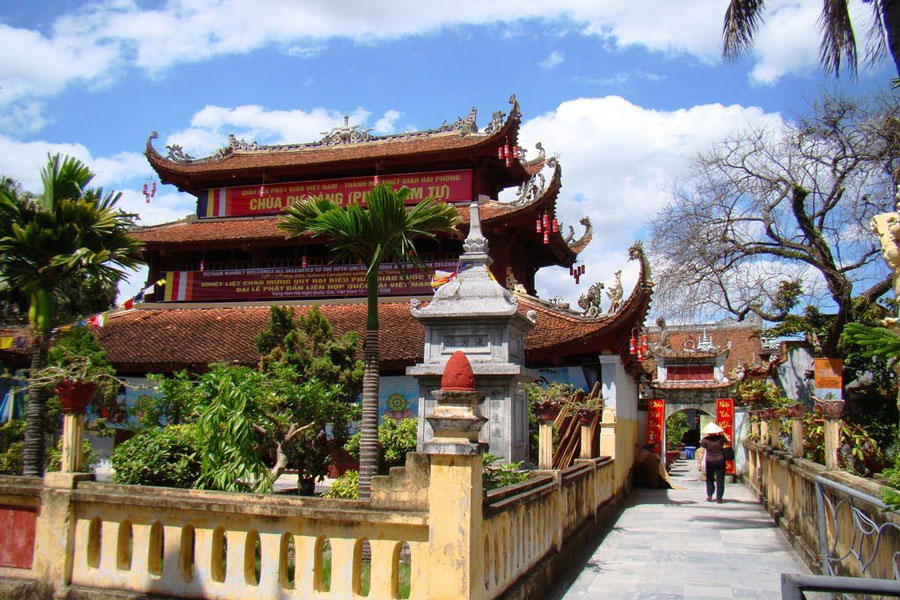
Built during the Le Gia Tong Dynasty of the 17th century, this Buddhist pagoda reflects an ancient and respected building style from the 10th century, including Indian and Cambodian style roofs in the altar rooms and more recent artistic additions from the early 20th century. The beautifully constructed pagoda is overlooked by a bell tower and is nestled among serene gardens. Visitors can enjoy the peaceful quiet, bring bread to feed the turtles and fish, and revel in the artistry evident all throughout the compound.
6. Hong Khen (Nhan Tho) Communal House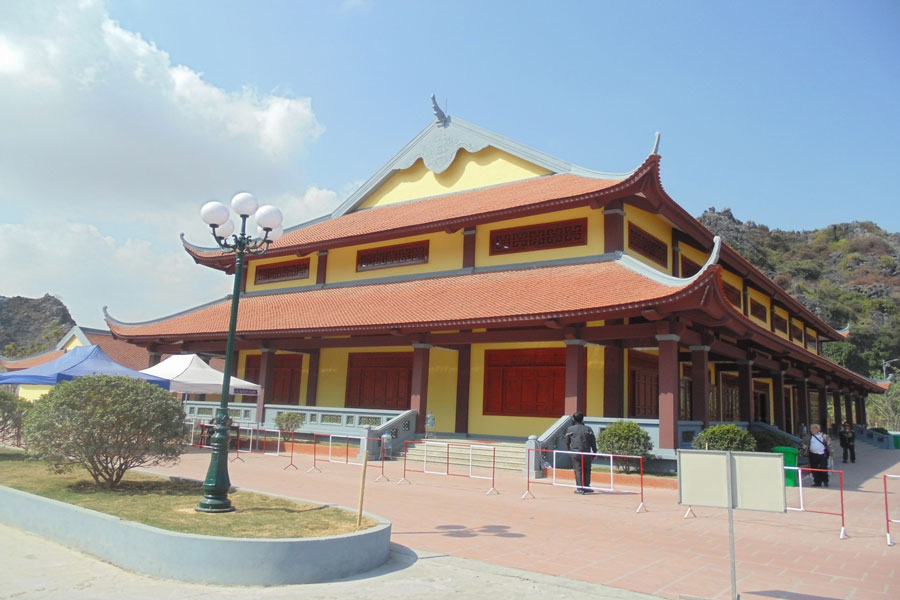
Built in 1717 to honor a Vietnamese hero named Ngo Quyen, the communal house was moved in 1841 from the original Khen Village to its current position on Hong Khen Street. The structure is used as a temple by the community, and it is renowned for the exquisite woodwork used in the construction as well as the 300+ brightly colored dragon images and statues contained within. The site is open to visitors all year round and often houses festivals and religious ceremonies.
7. Municipal Theater Square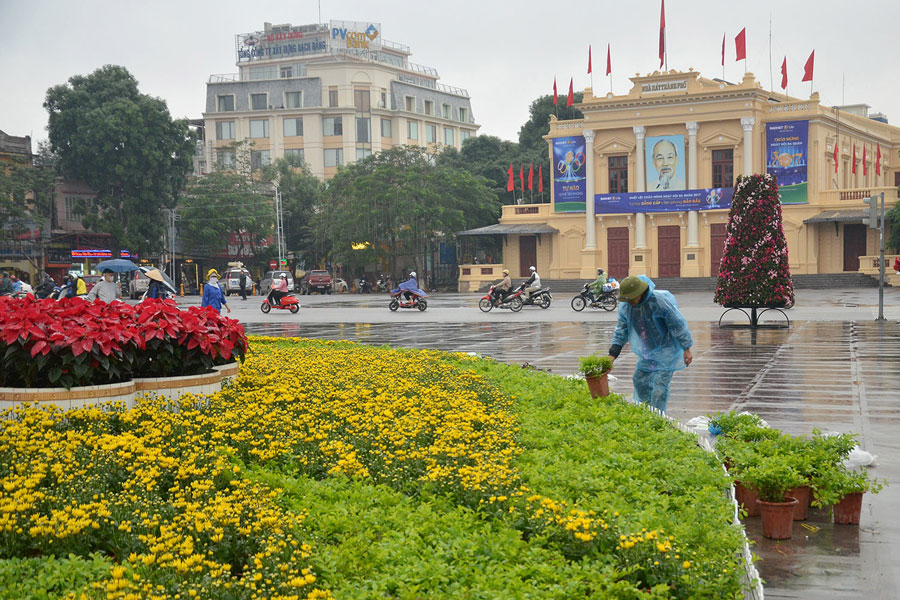
Located in Hai Phong’s city center, the Municipal Theater is home to many important celebrations and events throughout the year. Designed by French architects and built using imported materials, the theater is designed to hold up to 400 people. The ceiling of the theater is painted with frescoes and flowers as well as the names of famous writers and artists. Outside, Theater Square provides a peaceful and beautiful oasis from the city, with fountains, flower gardens, and sparkling lights. Also, traditional performances are scheduled weekly.
8. Hai Phong City Museum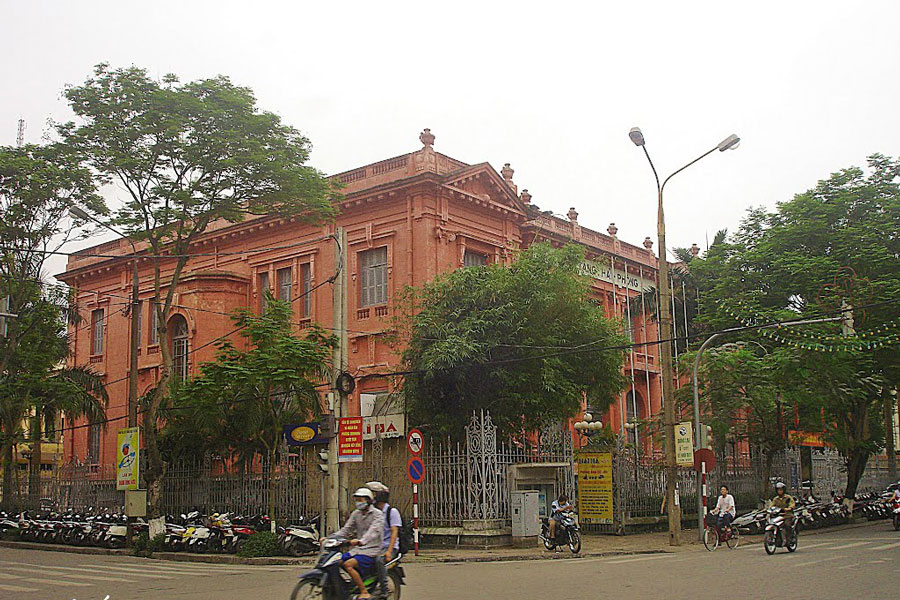
What the museum lacks in quantity, it makes up for in quality. Housed in a beautiful Gothic colonial building, the museum displays artifacts from Hai Phong’s past, including finds from ancient nearby tombs, ceramics, taxidermy, and remnants of war in the garden area—all with written English translations. For those looking to understand Hai Phong’s role as an important seaport over the centuries, a visit to this museum is a must.
9. Nghe Temple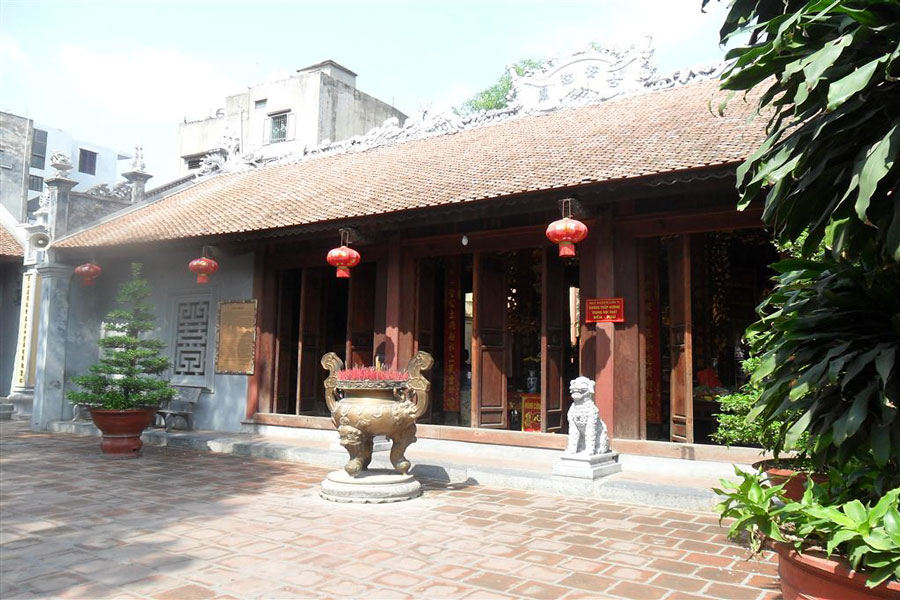
The Nghe Temple, once a small shrine and later built into a more impressive temple, honors Hai Phong’s founder, the female General Le Chan, who worked under the Trung sisters to help repel Chinese invaders in 43 AD. Locals consider it an important religious site, so please dress and act respectfully. Visitors will be fascinated by the intricately carved stonework that adorns the walls, roof, and steps of the temple. The temple is open all year round.
10. Bao Dai Villa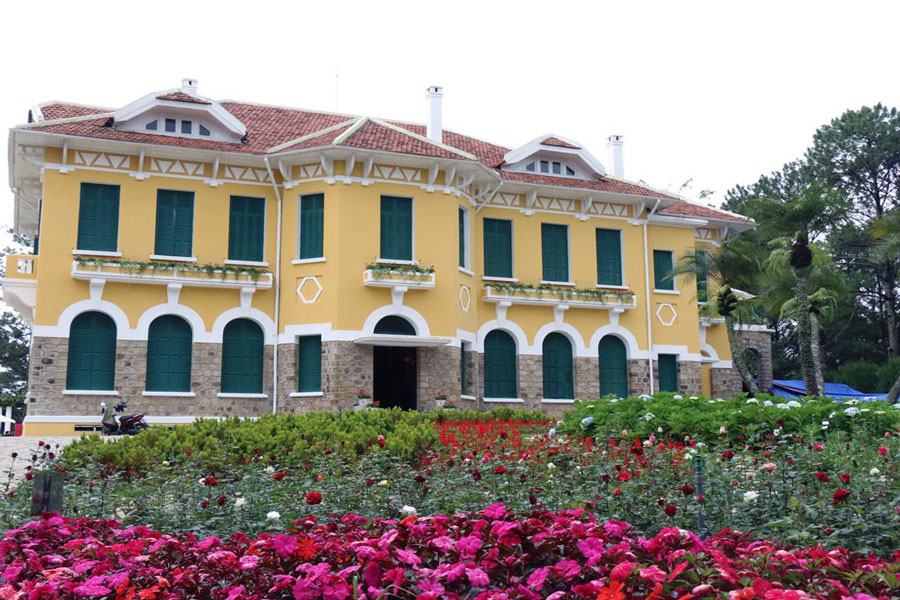
Originally built in 1928 by the French Governor-General of Indochina, Bao Dai Villa was later offered to Vietnam’s last emperor, Bao Dai, in 1946. The emperor loved to visit the villa during summer excursions to the Hai Phong area, enjoying the exquisite views of Do Son Peninsula. Today, the villa is a hotel where guests can pore over old royal photos, try on royal costumes (and take picture souvenirs), and see Bao Dai’s throne as well as taking in the beautiful views. The villa is open to guests all year round.
Tourists often opt-in a 2D1N hanging around Hai Phong. This is also our suggestion for first-timers to see the “mini Hanoi” on a wonderful trip. Let’s check it out.
Day 1: HaLong Bay – Cat Ba Island
Full day: Book a day tour on cruise to HaLong Bay. Do kayaking and swimming by the peaceful beach. Then move forward to Cat Ba Island and explore Cat Ba National Park Enjoy a gorgeous sunset on board while traveling back to town.
Day 2: Do Son Beach – City Museum – Theater Square
AM: Visit Do Son Beach early to experience fresh air and soft sand. Swimming, sunbathing at your leisure. Then have lunch with seafood at a convenient restaurant by the beach.
PM: Head back to the City Museum to witness the Gothic colonial style and learn some lessons during the Vietnam War. Then join a traditional performance at the Theater Square to treasure local culture and heritage.
If you are a vetaren backpacker, please feel free to manage the trip on your own and alter it when needed, else, we recommend you join a tour organized by a professional company, that can free you from hassles and keep you safe throughout the journey.
1. Banh Da Cua (Brown Noodles with Crab)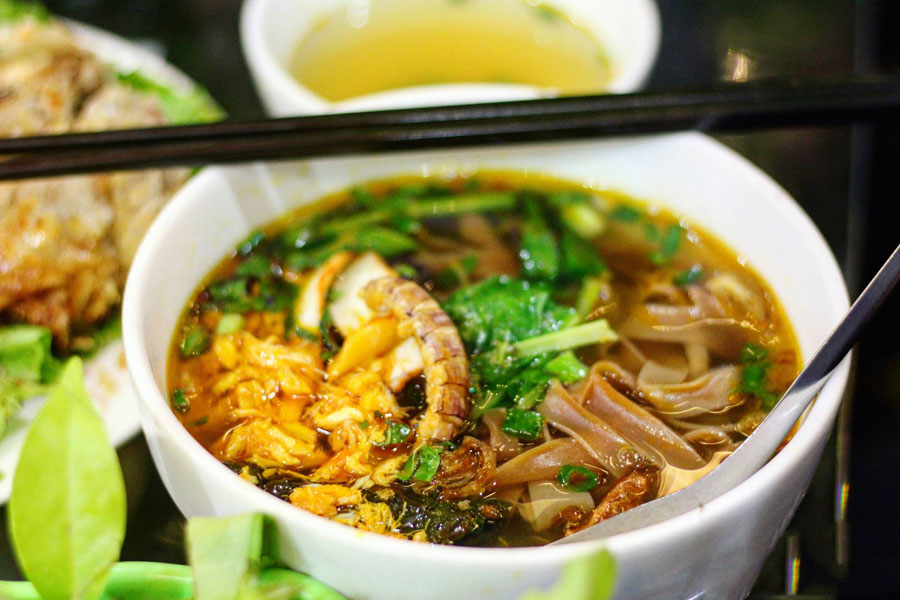
Chewy brown rice noodles and two types of crab meat cakes, pork balls, and beef simmer in a luscious broth cooked with greens. The soup is usually served with a plate of shredded lettuce and perilla leaves. Depending on the restaurant or street vendor, you might also get chilis and nuts added to your bowl. This is comfort food Hai Phong style, a light and delicious meal that will make your taste buds tingle.
2. Nem Cua Be (Crab Spring Roll)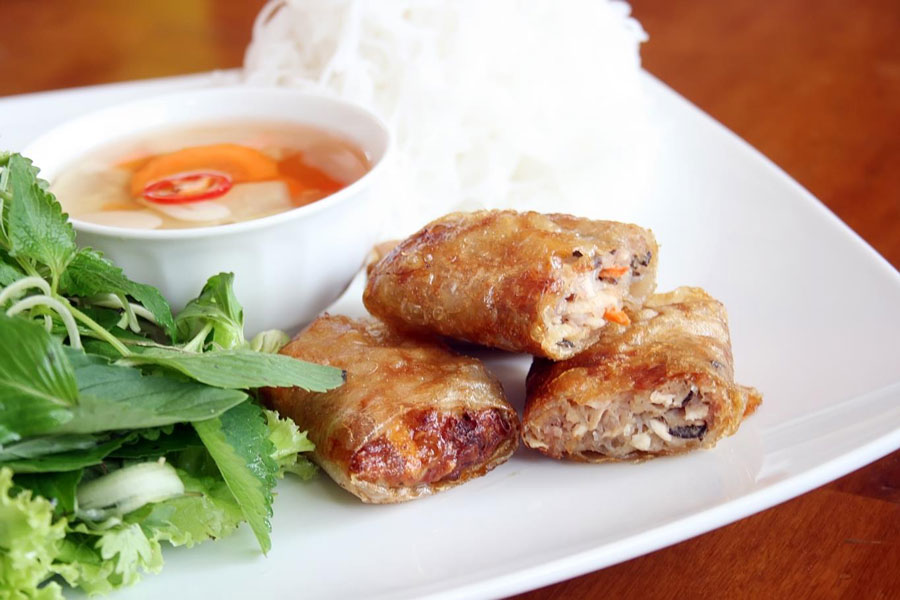
These square spring rolls are packed with a stuffing of ground crab meat, ground crab tile, lean pork, kohlrabi, carrot, ear mushrooms, bean sprouts, rice paper, vermicelli, and seasonings. The rolls are often served alongside rice vermicelli, lettuce, and chopped cucumber as well as a sweet-spicy-salty-sour dipping sauce. For fans of traditional cylindrical Vietnamese spring rolls (nem ran), nem cua be will not disappoint.
3. Goi sua (Cool Red Jellyfish Salad)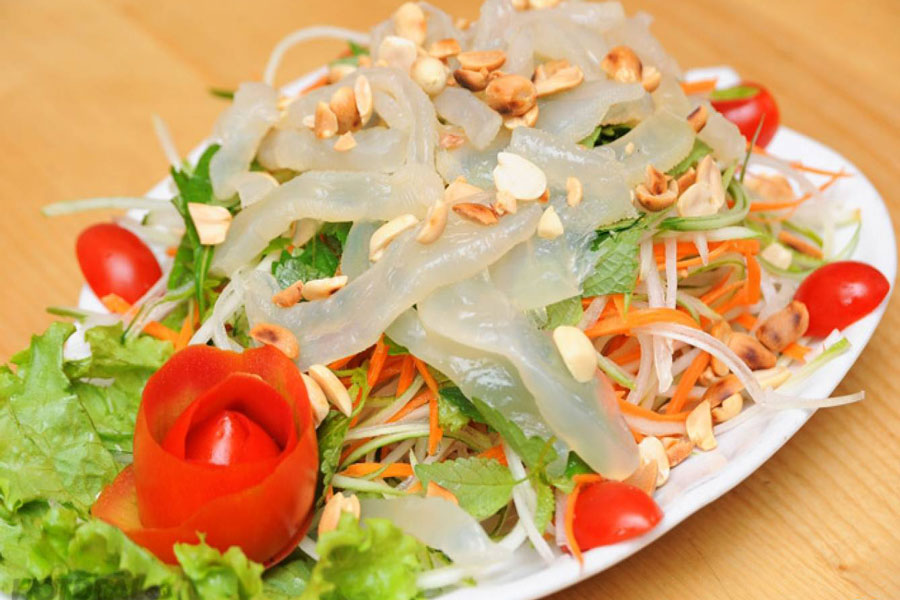
Cool red jellyfish salad is the perfect antidote to the hot, sweltering days of Hai Phong’s summers. Red jellyfish is flavored with lemons, kumquats, and other seasonings before being sliced into bite-size chunks with a bamboo knife. The slices are served with grilled tofu, young coconut, mint, perilla, and shrimp paste.
4. Bun Ca (Fish Noodle)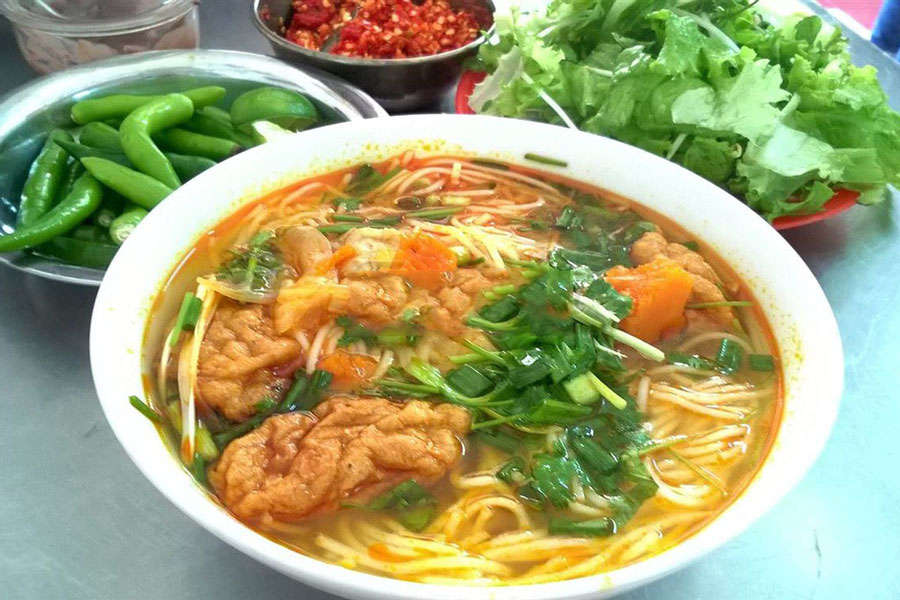
The fish noodle in Hai Phong combines flavors of the sea with flavors of the countryside. Both saltwater and freshwater fish are used in this soup, including parts of the fish that Westerners usually don’t consider edible: the bladders, stomachs, and heads—all of which impart a unique and delicate flavor to the soup. Vegetables and noodles are added to the broth, making this a satisfying meal in a bowl.
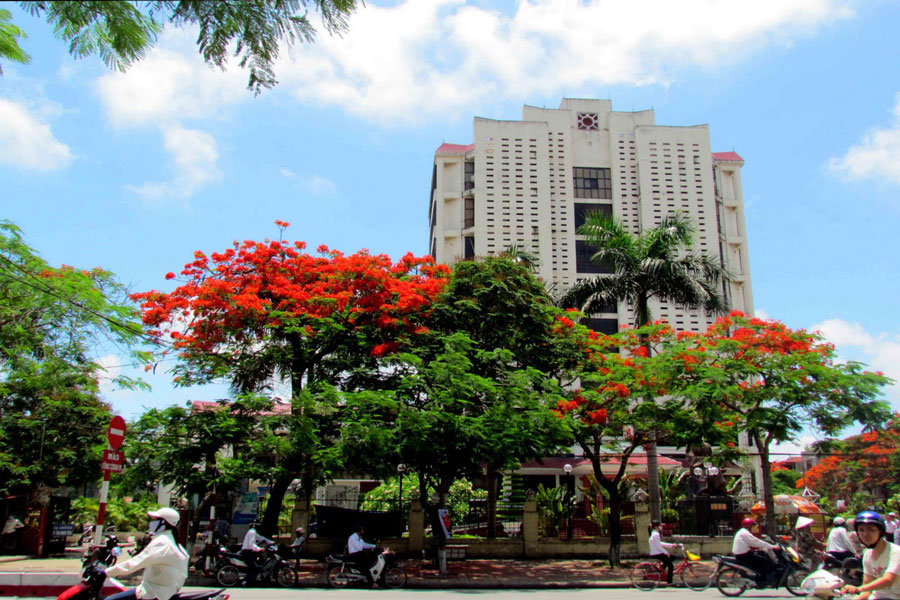
Hai Phong features a humid subtropical climate, with hot, humid summers accompanied by 26°C to 33°C temperature range – and warm, dry winters vary from 14°C to 20°C. For traveling, spring (March and April) and fall (September through December) offer the most equable temperatures and best chances of cooperative weather.
Hai Phong is easily accessed with regular air, rail links and good roads from Hanoi.
By air: Haiphong’s Cat Bi Airport is a busy domestic terminal. There are flights from Saigon and other points. Both Vietjet, Jetstar and Vietnam Airlines operate flights on the route. Fare is reasonable, but varies upon seasons.
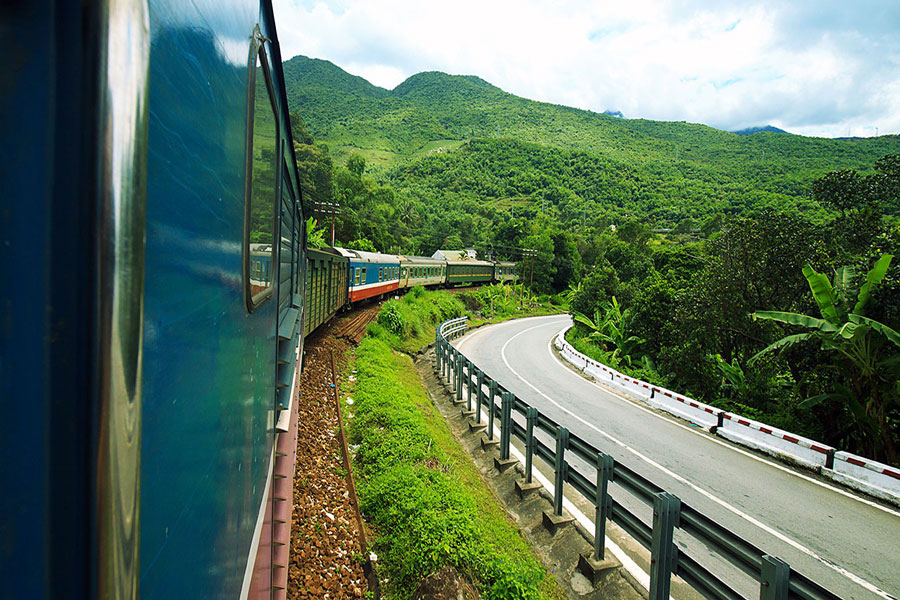
By train: There are 3 trains per day run from Long Bien Station in Hanoi. Journey time is just over 2 hours. A ticket for an air conditioned soft seat costs around VND200,000.
By bus: A new highway connection makes Haiphong just 1.5 hours from Hanoi. Frequent buses run from Luong Yen station in Hanoi (near the old quarter) to Tam Bac station in the centre of Haiphong, with fare at around VND150,000.
Throughout this article, we wish you to have an idea of how to travel to Hai Phong for your best experience. In case you are looking for your own travel agent, who can offer a wonderful and hassle-free trip to Phu Quoc, please feel free to let us know. We always commit our best to make it your once-in-a-lifetime journey.
 France
France  Spain
Spain  German
German  Italian
Italian 

 Vietnam Tours
Vietnam Tours  Cambodia Tours
Cambodia Tours  Myanmar tours
Myanmar tours  Thailand Tours
Thailand Tours  Laos Tours
Laos Tours